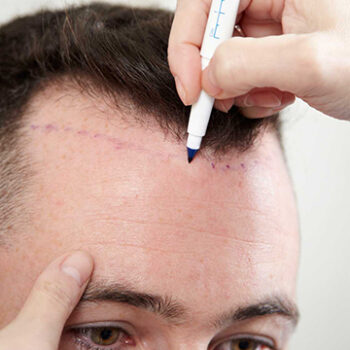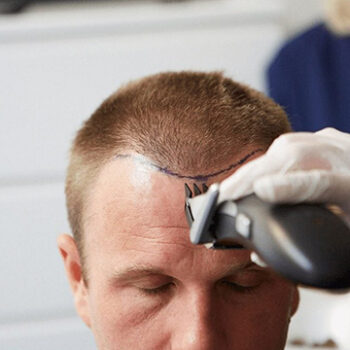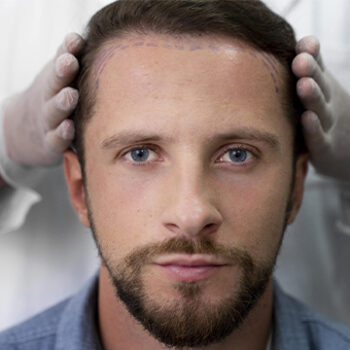How To Sleep After FUE Hair Transplant?
After undergoing a Follicular Unit Extraction (FUE) hair transplant, proper post-operative care is essential for the success of the procedure and for a smooth recovery. One of the most frequently asked questions by patients is how to sleep after FUE. Sleeping in the wrong position or not following the correct sleeping methods can lead to complications, including discomfort, swelling, or even graft displacement. In this article, we will explore the best practices and the importance of sleep position after a hair transplant to ensure optimal healing.
What is the Correct Sleep Method After an FUE Hair Transplant?
The correct sleep method after an FUE hair transplant is crucial to avoid disrupting the healing process and ensuring that the newly transplanted follicles settle in place properly. The following guidelines will help you understand the correct sleeping method post-surgery:
-
Sleep Position: The most important factor is the sleep position. After FUE hair transplant surgery, it’s vital to avoid direct pressure on your scalp. This means sleeping on your back is the most recommended position. Sleeping on your stomach or sides should be avoided in the first few weeks to prevent pressure on the grafts.
-
Head Elevation: It’s crucial to sleep with your head elevated for the first few nights after surgery. This helps reduce swelling and prevents direct pressure on the scalp. Elevating the head with pillows or using a wedge pillow will ensure that your head stays at an angle, minimizing the risk of graft displacement.
-
Sleep Environment: Make sure your bed or sleeping environment is comfortable and clean. This reduces the risk of infection and irritation in the graft area. Avoid sleeping on soft or uneven surfaces that could cause unnecessary pressure on the scalp.
The Right Position of Sleep
The right sleeping position after an FUE hair transplant involves keeping the head elevated and avoiding direct contact with the transplanted area. Here’s how to ensure you’re sleeping in the best position:
-
On Your Back: Sleeping on your back is the most recommended position, as it keeps your head elevated and prevents direct pressure on the transplanted hair follicles. This position allows for better blood circulation, reducing the chance of swelling and helping the grafts settle in properly.
-
Use Pillows for Elevation: Prop your head up with pillows to keep it elevated. Some patients even use a wedge pillow or a cervical pillow designed for this purpose. The goal is to maintain your head at about a 45-degree angle to minimize swelling and promote healing.
-
Avoid Sleeping on Your Side or Stomach: Sleeping on your side or stomach can put pressure on the scalp, risking dislodging the newly transplanted follicles. This can result in poor healing or graft failure. It’s essential to follow the recommended sleep position for the first few weeks after surgery.
The Rhythm of Sleep After FUE Hair Transplantation
Your sleep rhythm will naturally be affected during the first few days following the FUE hair transplant. Some discomfort may occur, and adjusting to a new sleep position may take time. Here’s what you need to know:
First Few Days: In the initial 2-3 days after the procedure, sleep may be a bit difficult due to the discomfort or slight swelling in the scalp. However, sleeping with your head elevated will help alleviate most of the discomfort. During these first days, it is important to focus on getting good rest, even if it means taking naps throughout the day.
Gradual Adjustment: As the swelling reduces and the healing progresses, you can slowly return to a more regular sleep schedule. However, make sure that for the first 10-14 days, you continue to sleep with your head elevated and avoid direct contact with your scalp.
Quality of Sleep: It’s essential to get enough sleep during your recovery. Rest is crucial for the healing process as it allows the body to repair itself. Avoiding stress and maintaining a calming environment will help you sleep more soundly and aid in faster recovery.
Sleep After Transplantation and Postoperative Edema
One of the most common post-operative issues after an FUE hair transplant is postoperative edema, or swelling. This typically occurs in the forehead and around the eyes, and while it’s a normal part of the healing process, it can be uncomfortable. Proper sleep can help minimize swelling:
-
Head Elevation: Elevating your head during sleep prevents fluid retention and reduces swelling in the transplant area. This should be done for at least the first 7-10 days after surgery.
-
Cold Compress: If swelling occurs, applying a cold compress (not directly to the transplant site, but to the forehead) may help. This should only be done while you’re awake, and care should be taken not to touch the transplanted hair follicles.
-
Sleep Pattern: A consistent sleep pattern will help reduce the risk of prolonged swelling. Try to avoid sleeping in positions that increase swelling, such as sleeping on your stomach.
Facial Expanding After Hair Transplantation
Facial expansion or swelling around the face is a common occurrence after a hair transplant, particularly within the first few days. Here are a few tips to manage facial swelling effectively during your recovery:
Keep Your Head Elevated: Keeping your head elevated is the most important factor in minimizing facial swelling. Make sure to sleep with extra pillows and avoid positions that might cause fluid retention.
Gentle Massaging: After the first few days, if approved by your surgeon, you may be advised to gently massage the face to promote blood circulation. This should only be done under medical guidance to ensure that it doesn’t affect the healing process.
Stay Hydrated and Avoid Salt: Staying hydrated is essential for healing, but it’s also important to avoid consuming too much salt, which can exacerbate swelling. Drinking plenty of water and maintaining a balanced diet will support your recovery and help minimize post-operative swelling.

 English
English Français
Français Deutsch
Deutsch Türkçe
Türkçe 中國人
中國人



































